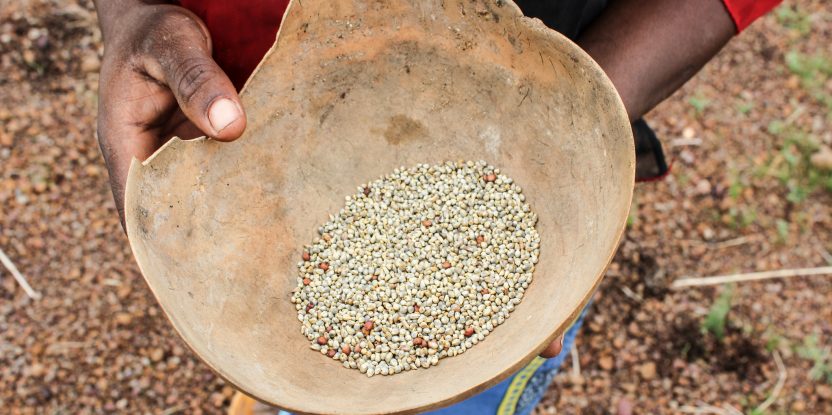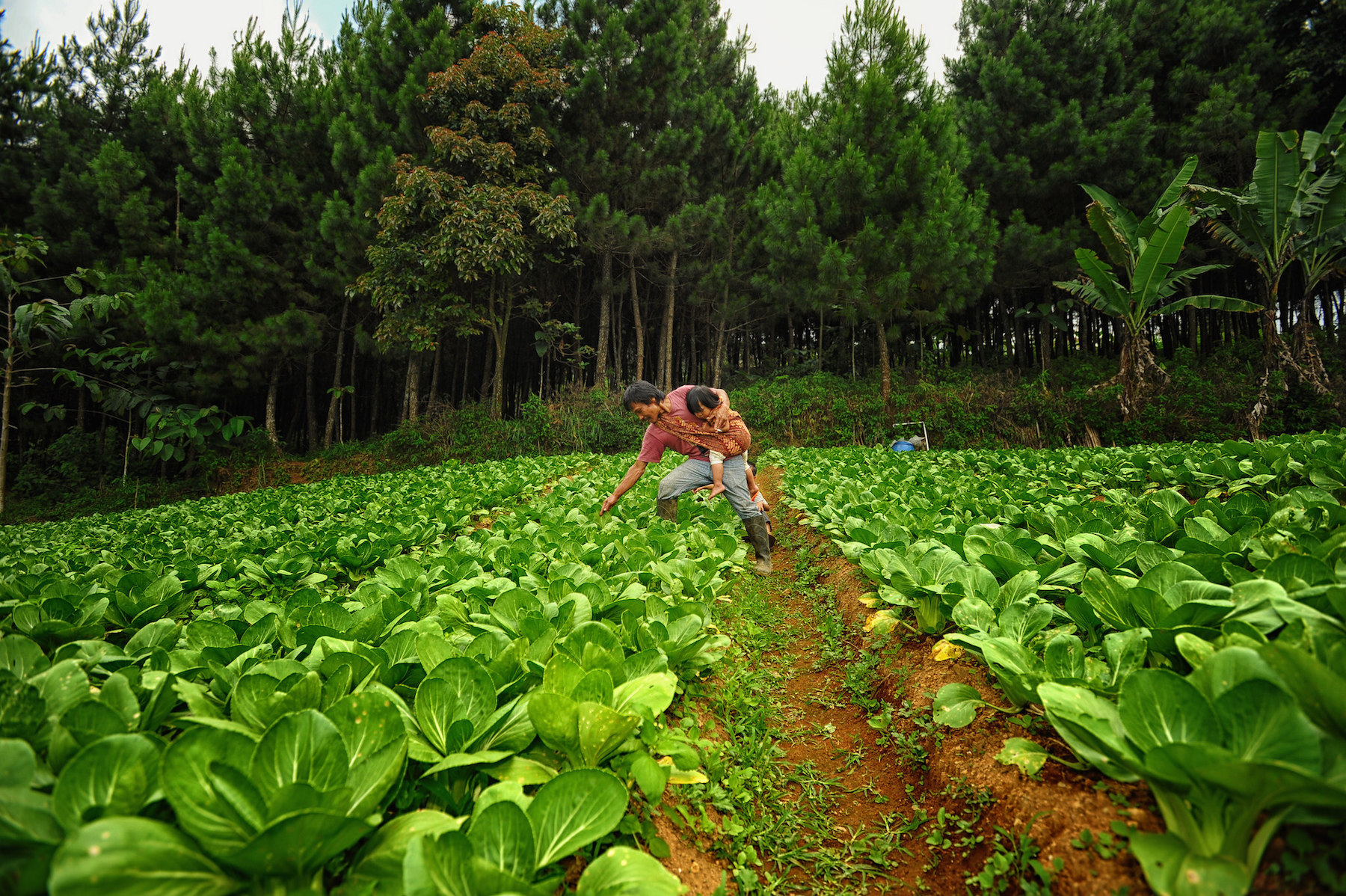
The growing demand for food — demand that is expected to double by 2050 — has led to widespread agricultural expansion, primarily at the expense of forests. It is estimated that between 1980 and 2000, more than half of new agricultural land across the tropics was developed on forested land and a further 28 percent opened up on secondary forestland. Despite this expansion and significant progress made to reduce hunger, the UN estimates that more than 840 million people worldwide remain hungry and undernourished.
Food security is increasingly linked to a range of sectors such as biodiversity, conservation, maintenance of ecosystem services, food production, sustainable livelihood provision, and climate change mitigation.
Numerous theories have been put forward that aim to find a balance between food security, conservation and livelihoods. But do these ideas work?
Twenty scientists from the Center for International Forestry Research (CIFOR) and partner institutions representing a range of disciplines set out to answer that question.
We wanted to challenge conventional wisdom that as economies and people develop, we have to transition from forest to agriculture to manufacturing and service industries and assume the outcomes are always positive
Led by CIFOR scientist Terry Sunderland, the team looked at six pantropical landscapes, in Zambia, Burkina Faso, Cameroon, Ethiopia, Indonesia and Bangladesh, to find out what is actually happening on the ground.
“We wanted to challenge conventional wisdom that as economies and people develop, we have to transition from forest to agriculture to manufacturing and service industries and assume the outcomes are always positive,” says Sunderland.
“We wanted to test if that is actually the case, particularly for rural dwellers, and if it really has a net benefit in the longer term,” he adds.
Sunderland says the research team wanted to get a broader perspective on the impact of this transition to agriculture in these forested areas. So they took a wider approach, looking at not only socio-ecological aspects but socio-economic factors as well.
“We found that it is not a linear process. This transition impacts in the short term and in the long term. It affects the environment, health, diet and social and cultural impacts too,” he says.
ONE SIZE DOESN’T FIT ALL
One of the strongest points that came out of the study is that when you look at rural communities in changing landscapes, you need to not only examine each factor, but how each relates to its specific circumstances. Sunderland says one of the problems is that people often generalize when it comes to the lives of local people living in these rural areas.
“We tend to come out with sweeping statements about forest dependence, forest reliance and diets and so on, but it really it depends on a whole range of other externalities like culture and economies, so the local context is really important,” says Sunderland.
One surprising finding emerged in Ethiopia, for example, where the scientists found that people who lived further away from the forest were actually poorer because they didn’t have access to fuel wood. These communities were forced to burn manure as fuel instead of putting it on their crops.
“This situation led to decreases in crop yields and grazing lands and that led to these communities becoming considerably poorer,” says Sunderland.
One example of relying on assumptions comes from Indonesia, where there is the general argument that oil palm does great things for the local economy. Sunderland says that may be the case, but that this point has been oversimplified.
When the researchers spoke with oil palm workers they found a huge dietary transition from a very varied, nutritious diet, often from forest foods, to a very simplified diet that relies on sugar and fats.
“It’s an ‘instant noodleization’ of diets of sorts. When people have a bit more money in their pockets they tend to buy pre-packaged food. It’s a status thing, too. And it is these things that are usually never thought about,” says Sunderland.
He says food security shouldn’t be counted just in calories, but should also include people’s actual diets and hence nutrition.
THE MILLION-DOLLAR QUESTION
So, how do we maintain economic growth and food security without ruining the environment?
“What this study is saying is it’s not about keeping people forest-dependent, but it is keeping people cognizant of the fact that forests play an important role in food security, for example in terms of ecosystems and their impact on forest agriculture,” says Sunderland.
He says once you are on the ground you quickly realize that many of these concepts such as land-sharing and land-sparing, are often more conceptual than anything, and imply a “grand design” at the landscape scale that simply is not there. He says there is a need to really get down to the complexities of these landscapes.
WHERE DO WE GO FROM HERE?
Over the years, critics have asked: how are you going to feed the world if you don’t have massive agricultural expansion across landscapes? But the research shows it is not a question of ‘either/or’. Forests and trees have a key role to play.
The new study references previous research which estimates that over 1.3 billion people utilize forests, and that trees and forested landscapes generate significant income for local people who could earn as much from foraging forests and wild lands as from cultivating crops.
“There is now evidence of a clear dichotomy between the environment and food security. So it’s not as black and white as it seems,” says Sunderland.
Sunderland says that the impact on landscapes from climate change emphasizes this message, so there is a need to help farmers diversify in the future and do more with what they have.
We need to understand these landscapes before we can manage them
“Farmers who are growing eight different types of crops are much less likely to suffer from the environmental or economic impact of climate change, as opposed to a farmer who is growing just wheat and he happens to have a catastrophic year and everything is lost,” he says.
The researchers also looked at aid projects that were being implemented in their research areas. These projects focused on issues like agriculture, sustainability and livelihoods, and lasted for a relatively short time, from three to five years.
“That’s great for short term, but not the long term. So we are advocating moving away from projects to more process-oriented interventions and even understanding how landscapes change over time and why,” says Sunderland.
Moving forward in this research, the team recognizes is a great need to take a multi-disciplinary approach — when social scientists work together with environmental scientists you get a much better outcome, Sunderland says.
“There’s no silver bullet. There’s only a complex reality and you really have to get a grasp on it to move on. We need to understand these landscapes before we can manage them,” he concludes.
We want you to share Forests News content, which is licensed under Creative Commons Attribution-NonCommercial-ShareAlike 4.0 International (CC BY-NC-SA 4.0). This means you are free to redistribute our material for non-commercial purposes. All we ask is that you give Forests News appropriate credit and link to the original Forests News content, indicate if changes were made, and distribute your contributions under the same Creative Commons license. You must notify Forests News if you repost, reprint or reuse our materials by contacting forestsnews@cifor-icraf.org.

